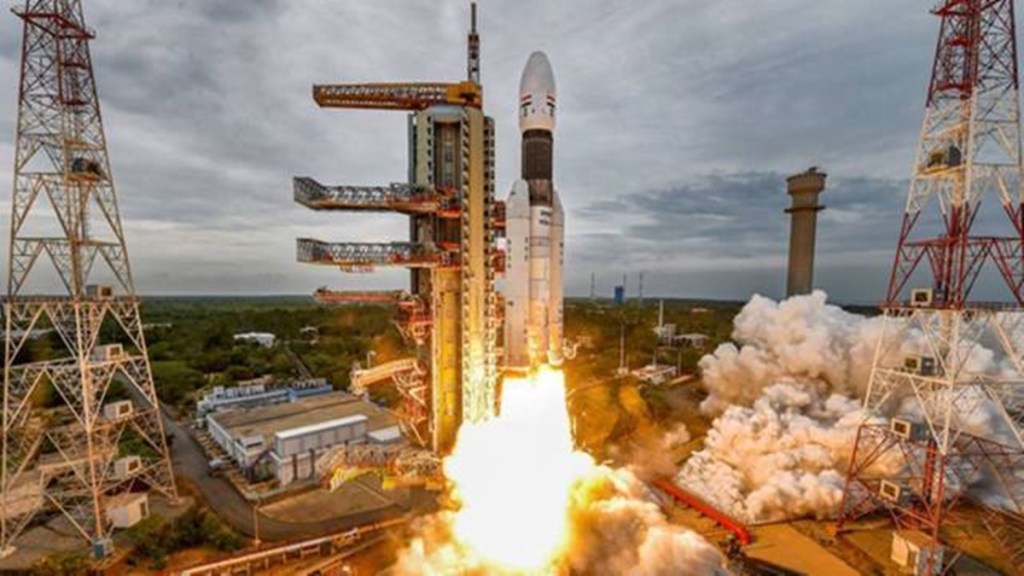India’s third lunar mission, Chandrayaan-3, is scheduled to lift off from the Satish Dhawan Space Centre in Sriharikota on July 14 at 2.35 pm IST.
How are launch windows determined?
The launch window is a constraint imposed by nature and technology that must be accounted for before launching every space object. An aeroplane departure window is largely optional, but due to heavy air traffic, they also take off at predetermined times on a schedule. Without such limitations, an aeroplane could lift off and land anytime.
Theoretically, the spacecraft-carrying rocket could also accomplish this, but limited fuel reserves prevent it. This is the same reason why returning to Earth is so difficult. “We can only fly on a carefully calculated trajectory if we can coordinate the positions of planets or the Moon with Earth at this time. Any deviation necessitates excessive fuel reserves, which cannot be refilled in space like bonus points in a video game. Keep in mind that everything in the cosmos is always moving. According to this line of reasoning, both the starting point and the final destination are in constant motion,” experts explain to Financial Express Online.
Because of this, trips to Mars only happen every two years, when the planet’s position at the end of the probe’s or other spacecraft’s journey is best for achieving the mission goals. For missions outside of the Solar System, the gravitational effects of other planets on the planned flight path can make flight paths much more difficult. During Voyager missions in the Solar System, for example, the acceleration caused by Venus’s gravity was taken into account, and Jupiter had a similar effect on the New Horizons probe. “This is because fuel is hard to come by in space, and the engines that run on it aren’t very advanced. Yes, someone might say that solar panels help probes move with the help of solar wind, but these are probes, not spaceships, which need fuel to get into orbit and back to Earth. And they need a lot of petroleum, says Srimathy Kesan, Founder and CEO Space Kidz India.
Based on the information available in the public domain, the launch window refers to the period of time during which a spaceship has the ability to go to a particular location in space. It considers both the speed at which the rocket can travel and the speed at which the space object it wishes to reach is travelling. As a direct consequence of this, different missions each have their own unique launch windows. A trip to Mars, for instance, can only depart once every 780 days at the earliest. On the other hand, the Voyager 2 mission, which travelled to Jupiter, Saturn, Uranus, and Neptune, made the most of an opportunity that presents itself only once every 175 years.
Another example is the Rosetta project, which was made to study the comet 46P/Wirtanen. Due to problems with the launch, this chance was lost, and the mission was switched to comet 67P/Churyumov–Gerasimenko.
Therefore, the launch window is a predetermined window of time that is chosen based on the mechanics of how orbits work in which a specific spacecraft can launch and still arrive at its intended location. This takes into account the desired destination of the rocket as well as the amount of fuel it requires. It is necessary for there to be a good arrangement of celestial bodies whose gravity is able to significantly affect the movement of the spacecraft for the launch window to be viable.
“Orbit and inclinations/angles, precession, weather conditions at launch, and lighting conditions are the four most important things to know when figuring out launch windows. While others are self-explanatory, illumination conditions are intended to maximise camera visibility,” said Girish Linganna, a Bangalore Based Space expert.
“Theoretically, we could build a spaceship powerful enough to fly to the Moon daily. That may be the case someday. But for now, the Chandrayaan-3 mission will only work if the launch from Earth happens at the right time. This will let the spacecraft get to the Moon and then move into the planned orbit around our satellite. Even if the launch happens within the time limit, a few extra days could significantly affect how long the mission lasts,” added Linganna.
The dates of July 12 through July 19 have been designated as the launch window for “Chandrayan-3.” Chandrayaan 2 was supposed to be launched between July 9th and 16th in 2019, but it was actually launched on the 22nd of the same month. On October 22, 2008, the Chandrayaan-1 spacecraft was successfully launched. The launch of Artemis 1 is scheduled for November 14, according to NASA. This is because there are just a few days that make up a monthly interval for the Moon during any given lunar cycle or month.


